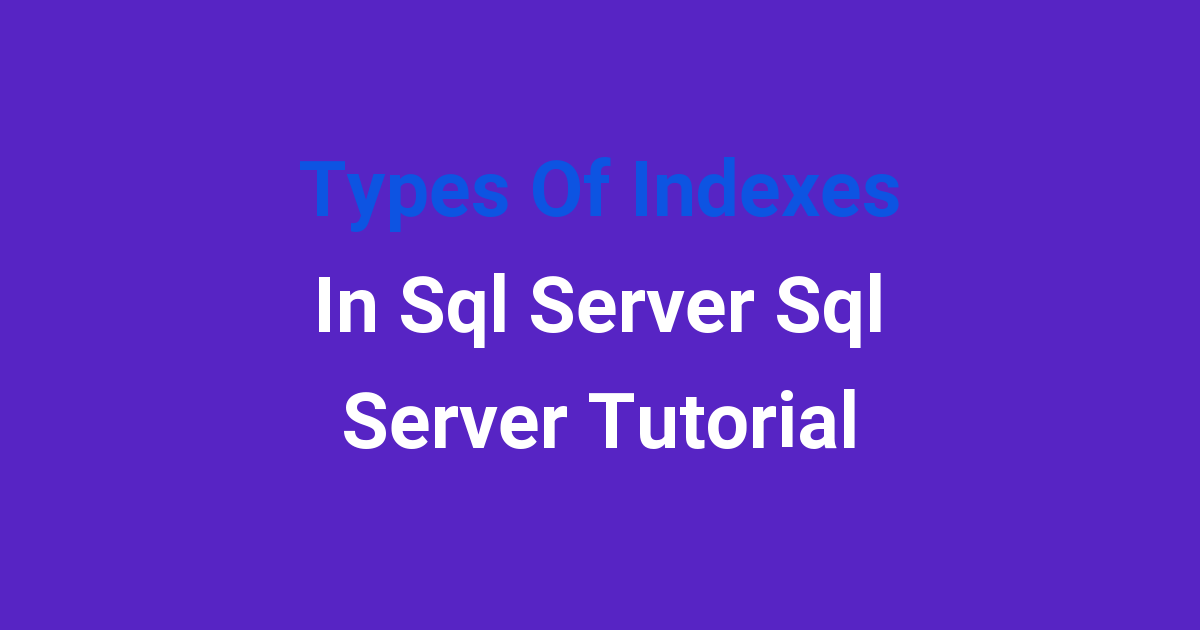Different types of indexes in SQL Server are discussed in this SQL Server tutorial.
Types of Indexes in SQL Server – A Comprehensive Guide
Introduction
As a student pursuing a Bachelor of Technology in India, we are constantly learning about the latest technologies and advancements in the field of engineering. One such important aspect of database management is the use of indexes in SQL Server. Indexes play a crucial role in improving the performance of database queries by providing quicker access to data. In this project report, we will delve into the different types of indexes available in SQL Server and analyze their pros and cons.
Problem Statement
In the realm of database management, one of the major challenges faced by organizations is to optimize query performance for large datasets. Without proper indexing, database queries can become slow and inefficient, leading to a significant impact on the overall system performance. Hence, it is crucial to understand the various types of indexes available in SQL Server and their implications on query optimization.
Existing System
In the existing system, most database administrators rely on clustered and non-clustered indexes to optimize query performance in SQL Server. Clustered indexes define the physical order of data rows in a table, whereas non-clustered indexes store a separate copy of the indexed columns with a pointer to the original table. While these traditional indexes work well for small to medium-sized datasets, they may not be sufficient for handling large volumes of data efficiently.
Disadvantages
One of the main disadvantages of using traditional indexes like clustered and non-clustered indexes is that they can slow down data modification operations such as insert, update, and delete. As indexes need to be maintained every time a data row is added or modified, it can lead to increased overhead and reduced performance. Moreover, traditional indexes may not be ideal for queries that involve joins, sorting, or grouping of data across multiple tables.
Proposed System
In order to address the limitations of the existing system, we propose to explore advanced indexing techniques such as filtered indexes, indexed views, and columnstore indexes in SQL Server. Filtered indexes allow us to index a subset of rows in a table based on a specific condition, which can be useful for optimizing queries with selective criteria. Indexed views, on the other hand, store precomputed results of queries in the form of a view, which can improve query performance for complex aggregations and joins.
Advantages
The proposed system offers several advantages over the existing system, including improved query performance, reduced maintenance overhead, and enhanced scalability for large datasets. Filtered indexes can significantly speed up queries with selective predicates, while indexed views can provide a materialized view of complex queries for faster access. Columnstore indexes, another advanced indexing technique, store data in column-wise format rather than row-wise, which can result in better compression and query performance for analytical workloads.
Features
Some of the key features of the proposed system include:
- Filtered Indexes: Index a subset of rows based on specific conditions
- Indexed Views: Store precomputed results of queries for faster access
- Columnstore Indexes: Store data in column-wise format for improved compression and query performance
- Advanced Query Optimization: Optimize queries with complex joins, aggregations, and sorting
- Scalability: Handle large datasets more efficiently with minimal overhead
Conclusion
In conclusion, the use of advanced indexing techniques in SQL Server can greatly enhance query performance and scalability for large datasets. By moving beyond traditional indexes like clustered and non-clustered indexes, organizations can leverage the power of filtered indexes, indexed views, and columnstore indexes to optimize query execution and improve overall system performance. As aspiring engineers, it is essential for us to stay abreast of the latest advancements in database management and continuously strive to enhance our skills in this ever-evolving field.

